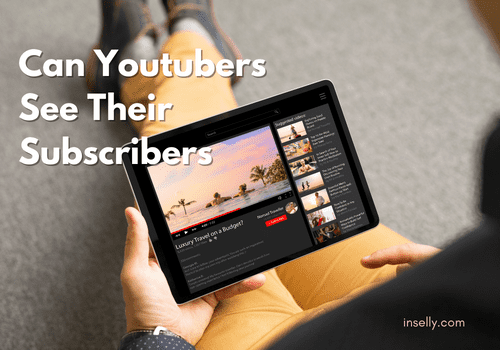YouTube Analytics is an invaluable tool for content creators, allowing them to delve into the performance of their videos. If you're a YouTuber, understanding this tool is crucial as it gives you insights into what’s working and what’s not. With analytics, you can see how viewers are interacting with your content, which can help guide your future videos.
Essentially, YouTube Analytics provides data on various metrics, including views, watch time, and engagement rates. But what does this mean for your likes? You can track the number of likes your videos receive, but the platform does not disclose the identities of users who liked your content. However, the collective data can inform strategies to boost engagement and grow your channel.
Understanding Likes on YouTube Videos

Likes on YouTube videos are one of the simplest yet most significant forms of engagement. When viewers take a moment to like a video, it sends a clear signal: they enjoyed the content! But what does this mean in the broader context of YouTube?
Here's a closer look at some key aspects of likes on YouTube:
- Engagement Indicator: Likes are a way for viewers to express their appreciation, serving as a direct indicator of how well your content resonates with your audience.
- Algorithm Boost: Videos that receive a lot of likes are more likely to be favored by YouTube's algorithm, potentially leading to increased visibility and recommendations.
- Commentary on Content Quality: Analyzing which videos receive more likes can inform you about the types of content your audience prefers, helping you tailor your future videos.
However, it's important to note that while you can see the total number of likes, you can't see the individual users who liked your videos. This keeps viewer identities private and creates a layer of anonymity. But don’t let that limit your understanding! Focus on patterns in your likes and how they correlate with viewer retention and comments.
In short, likes are just one piece of the YouTube puzzle, but they play a pivotal role in fostering a community and growing your channel!
3. Privacy of YouTube Users

When it comes to social media and video-sharing platforms, privacy is a hot topic, and YouTube is no exception. Users might wonder, “Who can see my activity?” especially when it involves something as personal as liking a video. The good news is that YouTube takes user privacy seriously. When you like a video, that action is kept rather private.
For instance, while YouTube creators can view statistics on how many likes their videos have received, they cannot see the specific users who liked the content. This safeguard ensures that your preferences remain confidential, allowing you to enjoy the content without feeling exposed.
However, let’s break it down a bit more:
- User Anonymity: When you like a video, it doesn’t reveal your identity to the creator or to other viewers.
- Public Profile Considerations: If your YouTube profile is public, others might see your activity, such as your likes, but not specifically which videos you have liked unless they search through your channel.
- Engagement Insights: Creators receive data on audience engagement in aggregate form, which helps them understand what type of content resonates with their viewers.
In essence, while engagement on the platform is essential, YouTube has built-in privacy features that protect user identities, keeping your ‘likes’ under wraps. This level of privacy is significant, especially in an age where personal data is often a point of concern.
4. How YouTube Creators Can Use Analytics

YouTube isn’t just a platform for sharing videos; it’s also a treasure trove of data for creators! One of the fascinating features of YouTube is the analytics dashboard, where creators can dive deep into how their content is performing. Using this data effectively can significantly enhance a creator’s strategy.
So, what kind of analytics can they access? Here are the key components:
| Analytics Feature | Description |
|---|---|
| Watch Time | Shows how long viewers are watching videos, which helps gauge content quality. |
| Audience Retention | Indicates how many viewers stay engaged throughout the video and where they drop off. |
| Traffic Sources | Reveals where viewers find the videos, such as search, playlists, or external websites. |
| Demographics | Insights into age, gender, and location of viewers, helping creators tailor content. |
Working with these analytics can provide YouTube creators with invaluable insights. For instance, if they notice a dip in audience retention at a certain point, they can adjust their content or change their pacing to keep viewers engaged longer. Additionally, knowing the demographics allows creators to cater their content to fit the interests and preferences of their audience.
In short, analytics are an essential tool for any serious YouTube creator. By leveraging this data, they can not only enhance their content but also build a stronger relationship with their audience, leading to higher engagement and growth on the platform.
What Information YouTube Provides
YouTube is a treasure trove of data for content creators, but when it comes to specifics about who liked their videos, things can get a bit murky. So, what exactly does YouTube provide to its creators?
First and foremost, YouTubers can see the overall number of likes and dislikes a video has received. While you won’t find any names attached to these metrics, you get an idea of how your audience is responding to your content. This is often displayed beneath the video in a simple, user-friendly format.
In addition to just the numbers, YouTube does provide more detailed analytics through its YouTube Studio. Here’s what you can expect to find:
- Engagement Reports: You can see metrics like watch time, average view duration, and unique viewers, helping you understand how much your audience is interacting with your video.
- Demographic Details: While you won't know exactly who liked your video, you can learn a lot about your audience as a whole, including their ages, genders, and geographical locations.
- Traffic Sources: This feature lets you see where your viewers are coming from, which can help you tailor your content for your target audience.
However, despite all these insights, one critical piece of information remains elusive: the identity of individual users who liked or disliked videos. YouTube values user privacy, which is why this information is kept under wraps.
The Importance of Engagement Metrics
Engagement metrics are the lifeblood of a YouTube channel. While the number of likes is certainly significant, it's just the tip of the iceberg when it comes to understanding viewer interaction. So, why are these metrics so important?
Engagement metrics offer a deep dive into how well your content resonates with your audience. Here’s a breakdown of why they matter:
- Content Optimization: By analyzing likes, comments, shares, and watch duration, creators can figure out what works and what doesn’t. This allows them to fine-tune their content strategy to better serve their audience.
- Algorithm Advantage: YouTube's algorithm rewards videos that keep viewers engaged. Higher engagement can lead to better visibility in search results and recommended videos, increasing the chances for organic growth.
- Building Community: Engagement metrics provide insight into how your viewers are communicating. An active comment section, for instance, can help foster a sense of belonging and community.
To sum it up, engagement metrics aren’t just numbers; they’re critical indicators of your channel's health and growth potential. Whether you’re a seasoned YouTuber or just starting out, paying attention to these metrics can make a world of difference in your content strategy.
Can YouTubers See Who Liked Their Videos?
YouTube is one of the most popular platforms for sharing videos, and it's natural for creators to want to know how their audience is engaging with their content. One question that frequently arises is whether YouTubers can see who specifically liked their videos. The answer is quite interesting.
When a viewer likes a video on YouTube, their action is aggregated into a total number of likes. This count is visible to anyone, but the identities of individual users who liked the video remain private. Here’s a breakdown of the key points regarding this feature:
- Aggregation of Likes: YouTubers can see the total number of likes on their videos.
- Visibility: The count is available publicly, meaning anyone can see how many likes a video has received.
- User Privacy: Specific identities of users who liked the video are hidden from the content creator.
- Engagement Analytics: Creators can access general analytics about likes and other engagements but not on an individual level.
For those interested in audience interactions, YouTube provides various metrics that go beyond just likes, such as:
| Metric | Description |
|---|---|
| Views | Total number of times the video has been viewed. |
| Comments | Number of comments left by viewers. |
| Subscribers Gained | How many new subscribers were gained from the video. |
| Watch Time | Total amount of time viewers have spent watching the video. |
In summary, while YouTubers cannot see precisely who liked their videos, they can analyze the overall engagement metrics to better understand their audience and improve content strategy.
Conclusion: Navigating YouTube Metrics Effectively
Understanding YouTube metrics, including likes, comments, and views, helps creators tailor their content but remember that individual viewer actions remain anonymous for privacy reasons.
 admin
admin








